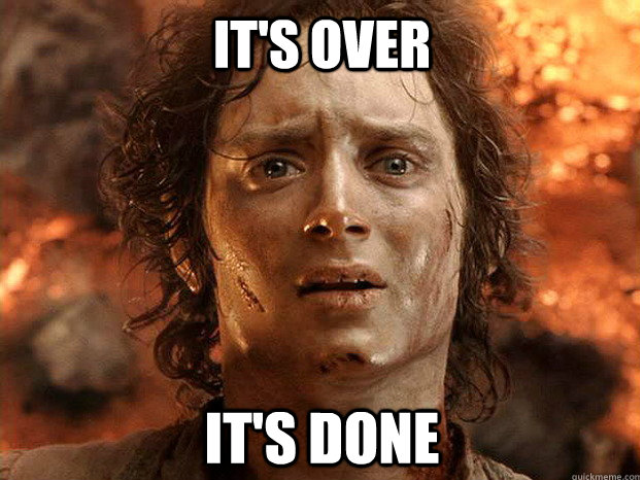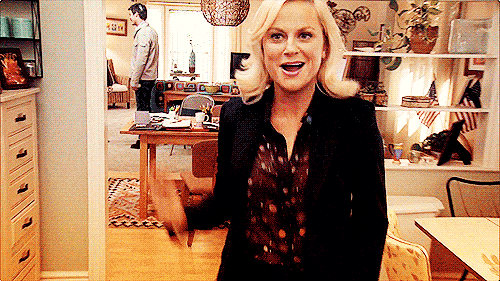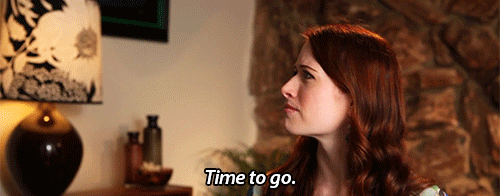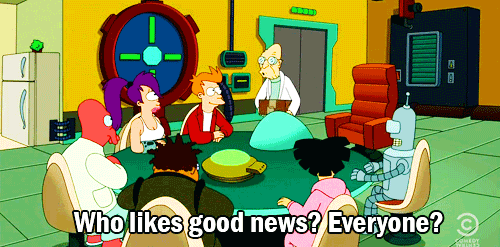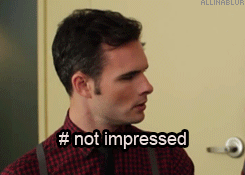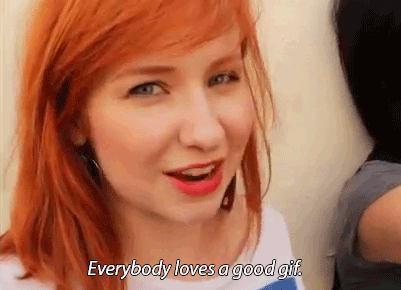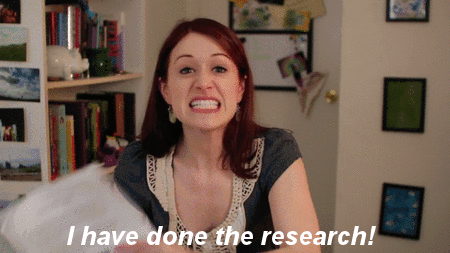Written on Monday, June 02, 2014 by Unknown
Hello there reader!
My name is Danny and you have somehow stumbled upon my senior thesis project.
It's nice to meet you.
Well, since you're here, allow me to explain what you'll find on this blog.
For starters, you may have noticed that all of the posts are in reverse order. This is not unusual for blogs, as people tend to want to read the most recent post first. But if you want to start from the beginning I have listed all relevant posts on this page (which I've also linked to on the right). There is also another "what is this" page on the side as well, but I wanted some kind of introduction on the homepage too.
This thesis is about transmedia and webseries. I had a few goals when I first started. Whether or not I completed them successfully is up to you. In my personal opinion, I think I completed them all to the best of my ability. Especially number six.
1. Explore the topics of transmedia storytelling and web series in a unique way.
2. Write about transmedia while also creating transmedia.
3. Come up with some of my own theories about said topics.
4. Learn and try new things which will hopefully lead to an interesting end result.
5. Embark on the difficult but rewarding task of being the first student at my school to create an entire thesis online that won't ever be bound in printed form (at least not by me).
6. Have fun!
In general I found that there was not a lot of research already done on these topics, so you'll probably see a lot of posts where I postulate (and ramble a bit) about he implications of transmedia storytelling and web shows. So there is a lot of my own opinion in here and a lot of unanswered questions. Hopefully there will be a time where there will be endless amounts of articles, books, videos, and any other academic work about the topics, but for now I just had to wing it.
I also had to wing a lot of this thesis, because a project like this had never been done before. So my advisor and I had to make up a lot of the rules as we went. In the future, when someone else does a project like this (and I'm sure they will) I hope my time spent as guinea pig no. 1 can be beneficial.
Because this project is online, it is highly likely that links, gifs, memes, and other pieces of media will expire. I will attempt to salvage as much of it as possible (by saving the photos and re-uploading them so they wont go away, for example), but I can't make any promises. They say that once things are on the internet they stay there forever, but that doesn't necessarily mean that they stay in the same place.
Also, due to the unconventional nature of my written work it was not all proofed, graded, and returned to me like everyone else. So there are bound to be spelling and grammatical mistakes, and maybe even some incorrect facts or something. I am doing my best to comb through it all again, but that takes time and I don't always catch my own mistakes. But please, feel free to comment on any post if you find an error and I will correct it as soon as I can.
And yea, I know. I use way to many commas. And I hyperlink too much. So sue me.
Even though my thesis is over and I have graduated, I still want to retain the integrity of this blog so I will be checking it periodically.
I hope you enjoy what you read/see here and that it may inspire some people to do some of their own research and come to some of their own conclusions about transmedia and web shows. I am always interested in what people think about this stuff and I can't wait for new authors to create more literature (and other media!) about it.
Thanks for stopping by!
Feel free to contact me with any questions/comments/concerns/hypotheses/epiphanies/absurdities.
-Danny

Posted in
advisor,
contact,
LBD,
media,
project,
reader,
student,
theory,
thesis,
transmedia,
web show,
webseries,
what is this
|
Written on Thursday, May 08, 2014 by Unknown
This is it. It's all finished. I can hardly believe it. Oh how time flies...
I feel very accomplished right now. Not Darcy's version of accomplished, but pretty darn close.
And one day I will come to love this question. Actually I kind of already do, now that it's all over anyway.
Too bad your grammar isn't as good as your face, Ryan.
Also, I feel like this moment calls for some kind of break-dancing gif or something.
Nope. Never mind. I found something better.
NO WAIT. This is a far more accurate representation of my feelings:
Yep. That's the one.
So anyway, time to conclude. For real this time.
To recap: My thesis is about transmedia storytelling, particularly how it relates to web series. My artifact was The Lizzie Bennet Diaries (or LBD), a scripted transmedia web show composed of video blogs and a lot of social media. It was very popular and has inspired many similar creations. While it was my baseline and primary example, I was also interested in exploring transmedia in general and how it is a viable format for contemporary narratives. After some investigating I discovered that there is not a lot of literature on transmedia (or web shows for that matter) aside from a few history-type books, but they don't even go into the concept of transmedia that thoroughly. There are few to no theories on the subject but many people do see the potential of this type of narrative storytelling. Because it is so unique and often quite complex, traditional analysis could not be done. I attempted to come up with a new way of looking at transmedia (streams and barriers), but whether or not it is any good doesn't really matter. The point is that we do need a new way to analyze these types of projects (webseries and transmedia) that isn't as limiting as standard film and television criticism.
Well, why did I write about all of this?
For one, I love it. I find it all to be fascinating and I just love web shows. I think they are an emerging form of media that will eventually be the norm and I think it's so great that it isn't as limiting as TV and film. Almost anyone can make a web show. And the fact that it can easily spread and go viral is amazing. Your audience is much more accessible. Which leads to the main reason why I study transmedia, which is that I love the interactivity of it. I was never able to immerse myself into a show like the way I was able to with LBD. And that, for me, was a total game changer. I want all of my stories to be like that from here on out. It brings the narrative to a whole new level. Or levels.
While researching all of this, I quickly found out that not everyone is on the same brain train as me right now. They don't all share my passion, and frankly there are still not that many people who even know what transmedia is. I hope that in a handful of years this wont be the case, but for now it's webseries that is making a name for itself. Transmedia may have to wait in the wings a little while longer until it's time for the spotlight. Still though, I was a little shocked by the lack of materials out there. Perhaps it would behoove some academics to spread their wings a little and learn more about some emerging types of narratives. Because seriously folks, I really really want to know what people think about this stuff.
Other than research, I also learned quite a bit about transmedia through the process of actually writing this thesis. The first thing I learned is that transmedia is (to borrow from my professors vocabulary) wicked hard. This thesis was an experiment, and honestly I don't think my results were overwhelmingly successful. Not that the thesis itself is bad, but I don't think I really succeed when it came to "systematically dispersing elements across multiple delivery channels for the purpose of creating a unified and coordinated experience" (to borrow from Henry Jenkins). Almost all of my content was on this blog. Only one big part, my theory section, was done via different media and that was because it was a video. Otherwise, the twitter and facebook were rather useless and I just did not have time to make any other videos. So if I gained anything from this experience, it is some serious respect for content creators. Producing all of those elements and then managing all of those outlets is an incredibly difficult task. If I have any advice for future students that want to embark on a thesis such as this, it is: plan, plan, plan. If you want to make a transmedia thesis that is not only about transmedia, but is transmedia, then you need to make a calendar or something. Get organized and figure out how you're going to write and release it all. And find an awesome advisor who is open to trial and error. Props to my professor, who deserves some serious acknowledgements.
Speaking of my professor, she asked me three questions to consider while writing this conclusion.
1. Why was this important?
2. What does it teach us?
3. Where do we go from here?
Well, for #1 I would say it is important because it isn't going anywhere. Transmedia (and webseries) are here to stay. Almost all of the authors I read said the same exact thing. It may be slow burning, but it's catching on and they all couldn't wait to see what happens next. None of them knew what it meant for the future, but if I had to guess I'd say it also means some major changes for our culture and the way we experience stories. At least here in the US, current generations have been called passive and apathetic. But transmedia encourages participation and immersion, which will probably bleed into other areas of our lives as well - especially because not all transmedia has to be fiction. People want to interact, and they will. New technology and innovations will lead to a more active audience and perhaps a more active generation. And like many of those aforementioned authors, I also can't wait to see what happens. Hopefully I'll get to be a part of it.
Huh, I guess that kind of also answered #3 too. Well as for #2, I think it teaches us that we don't need to stick to the same old conventions and neither do our stories. As I said, people want to engage with narratives on a new level and both transmedia and web shows can provide people with that opportunity. It is exciting, fresh, and innovative. People can get closer to stories more than ever before and that is pretty remarkable.
I'm not sure what else it teaches us. Maybe in 20 years I'll have a better answer to that question. Once people start to take advantage of this medium and really put it to the test, then we will start to learn more. Maybe more about what it offers, what it can do, or what it means for entertainment as a whole. And not just entertainment, but the dissemination of information in general.
Maybe I'm just a little too enthusiastic, but I do hope that someday someone reads this and some of my enthusiasm can rub off on them.
But maybe by that time memes and gifs will be super outdated and old school. Just like those annoying "What people think I do/What I really do" memes. I've got to say, the rhetoric ones are really bad. Actually, 9% of the time any rhetoric gif or meme is going to be awful. What an unfortunate fact of life.
Time to wrap it up. Contrary to some of my previous posts where I stress out a lot over this thesis (I am just a lowly undergrad after all), I did have a blast writing it. Everyone else wrote long boring papers and I got to do a super fun blog about Lizzie Bennet! How awesome is that?!
Thank you so much to everyone who helped, encouraged, or simply tolerated me throughout this experience. And don't worry, I'll have a real thank you page up soon.
And here is one last gif just for fun.
Over and out.
-Danny

Posted in
advisor,
conclusion,
immersive,
implications,
LBD,
narrative,
participate,
The Lizzie Bennet Diaries,
thesis,
transmedia,
web show,
webseries
|
Written on Wednesday, April 30, 2014 by Unknown
It's almost done!
What's coming soon is the conclusion. I may also make another video this weekend, but then it's all over. I'm wrapping it up. Unless my professor wants me to add anything else then I will be done with my thesis. Hooray! Accomplishments! Awesomeness!
Also, the LBD DVDs have finally been shipped out! No, I'm not a backer so I wont be getting one. But I still think it's really cool! Exclamation points!
-Danny

Posted in
coming soon,
conclusion,
LBD,
news,
thesis
|
Written on Saturday, April 19, 2014 by Unknown
My advisor will be reading this soon and I don't doubt that she will want me to write a post about the "greater meaning" of my theory. I can't just write up a theory without asking some rhetorical questions that I almost never have the answers to. What does it all mean? What are the larger implications? Why do we even analyze this at all? WHO SHOT J.R.?!?!
My only thoughts on this are these (more lists!):
1. My theory is just a theory. It's not even like a theory with a possible result. It is just a lens that we can look through when analyzing transmedia. Yes, it can lead to bigger questions. After identifying streams and barriers, we can ask questions like: "Are the streams/barriers important? Why? What happens if we remove/alter them? Could the story be told without this stream/barrier? What/whose story is being told here? How is it being told? What did we learn from the stream/barrier about the narrative? Why is it here as opposed to somewhere else? Can we break it down even further?"
Like Poter, Larson, Hathcock, and Nellis' article about The Scene Function Model ("Redefining Narrative Events" cited in bibliography), we could test this lens on students and see what kind of conclusions they come to. Perhaps a new level will need to be added to the theory that better qualifies importance. Or maybe not. We could also discuss some of the same things they discuss but slightly altered. Instead of wondering why fans and novice viewers have different opinions on importance of particular scenes, we can talk about fans versus novice viewers in terms on interaction/immersion and how much they are willing to dive into the universe. Just dip a toe? Full on cannonball? Do you find it easy or hard to follow?
Basically the questions are endless.
2. What does this mean? I don't really know. In terms of media in general I think it means that we are breaking down the walls between producer and consumer and turning it into creator and participant. Eventually the ways that film and television are currently being produced will be obsolete. Perhaps even the mediums themselves will be obsolete. Is webseries the next big thing? Maybe. Only time will tell. Is transmedia the next big thing? Maybe. It's possible that some version(s) of transmedia will become popular. I love that it is so broad, but that is not ideal for businesses (at least not right now) and so they will likely experiment with different versions of transmedia storytelling. Industry and creators transmedia could become bigger and more strictly defined categories. Again, only time will tell. They did make an interactive media Emmy though. So there's that.
3. Why do we analyze it? Psh, that's like asking why I study rhetoric.
a. It's awesome.
b. You can peel back layers and discover what is hiding underneath. As Aristotle says, rhetoric is "the faculty of observing in any given case the available means of persuasion." So what are these different medias trying to say, how are they saying it, are they being persuasive, and should they even be saying it at all?
c. Analyzing transmedia means understanding transmedia. Why are we drawn to that type of storytelling? What is it about this that makes people want to interact? What tactics do they use and are they effective or not? What could be a greater purpose of transmedia storytelling (other than just entertainment)? Why do we like certain transmedia projects more than others? What makes them different or unique? What are the limits? What is possible?
d. It's awesome. Oh, did I already say that? Well I guess I meant it.
Look, this is a thesis. I'm still a student. This wont be published anywhere else other than my blog (at least that I know of right now, but if I feel like publishing it one day then more power to me). It is a loose theory and I did my best to when coming up with it. I think it's pretty cool and I had a lot of fun working on it. No one else needs to use it (but if they do I totally want credit). Of course that's not the point. I made it to say that it is possible (and necessary) to look at transmedia differently. I'm not sure if there are any other implications or meanings that I am just not seeing, but I do know that things are changing and even though I can't predict the future I just hope that everyone else will come to realize how awesome transmedia is.
I mean, come on. It gave us this:
Good gif combo right? My thoughts exactly.
-Danny
P.S. I will edit for grammar/spelling later. I just needed to post it now.

Posted in
implications,
LBD,
meaning,
questions,
rhetoric,
theory,
thesis,
transmedia
|
Written on Saturday, April 19, 2014 by Unknown
So Danny, what is all this business about a timeline?
Well non-existent person, I did actually have a point when I made that. I mean, it sort of got out of control and I spent far too much time on it, but I think it was worth it.
One of the points that I have been repeating like a broken record is that transmedia is freaking complicated. Just look at that timeline image. Can you even follow that without repeatedly referring to the key? (Granted, right now you can't really zoom in on it, but I'm working on that!)
Transmedia has layers and deepness that standard stories don't. They are flat. But the different levels make it confusing sometimes. And right now there is no one true way to define it and therefore no one true way to analyze it. At least not yet. I talked about kernels and satellites as a possibility, but that was quickly revealed to be problematic.
Now that isn't to say that The Scene Function Model didn't have good and usable components. For example, Porter, Larson, Harthcock, and Nellis posit that in films the plot is most important, but in TV it is the character development and continuous storylines that drive the show (24). The same characters (for the most part) return every week and we become invested in them. What is also fascinating is that in between episodes we assume that the characters keep on living their lives. I love this idea, because transmedia can take that abstract notion and make it literal. Learning what the characters do between episodes was something I never thought I needed to know, but after participating in LBD I found out how much fun that can be. And then those boundaries are broken down further when you literally interact with them through social media. How amazing is that!
There is also some validity to kernels and satellites when looking at transmedia projects, but I think it depends on said project. It can probably apply to things like the Star Wars franchise better than it could with LBD. Die hard Star Wars fans might disagree with me on that. But it is all about the setup. Social media is a big factor. And the fluidity of the pieces of media is another factor. So is the size of the universe, and the amount of audience interaction. There are so many factors.
For weeks I have been trying to come up with a way to look at transmedia that could be used generally. I wont steal these people's ideas about story bridges (and I don't know if I wholeheartedly agree with it anyway). This has been both the fun part and the hard part. These projects can be so different and transmedia seems to always be changing.
But I did come up with something. Here's my idea. My metaphor if you will. (Correction, pretty sure it's an analogy. 8th grade grammar, you have failed me.)
Meet streams and barriers.
This is my theory. I'll try to break it down as straightforwardly as possible. I actually wanted (and would have preferred) to make a video about this, but I am not at school so my resources are limited. It is entirely possible that I will end up expanding on this thesis even after the deadline, and if that is the case then I'll try to make a video.
Transmedia storytelling is essentially a series of streams and barriers. By streams I mean streams of water flowing down from a source (i.e. the creators of the media or the universe in which the narratives exist). There can be as many streams as the source is able to create, and each stream represents a particular piece of media (video, audio, social media, book, you name it). The barriers can be big or small, permanent or impermanent, good or bad, and represent the different plot devices used to move the story along or to cause conflict. Barriers can separate streams into more streams, keep streams separate, bring them back together, and keep them together. They can also serve as obstacles that a stream needs to get around (such as a problem a character needs to solve) or even something that helps the story move along faster or slower.
Streams practice divergence, convergence, and reconvergence. Water is a cohesive molecule, meaning that it is attracted to itself (because oxygen is electronegative and hydrogen is electropositive). So in general, it wants to stick together. But at the same time water is also an adhesive molecule, meaning that it likes to stick to other things (ever done the surface tension test where you put water droplets on a penny and see how many it can hold before it spills over? That is both cohesion and adhesion working at the same time). In storytelling, narrative devices can push components of the story apart thus separating a stream into two or more streams. But water is naturally attracted to itself and wants to interact, sometimes bringing streams back together (or back into the original stream, depending on the transmedia story). This can happen over and over again. Split, return, split, return. Diverge, reconverge, diverge, reconverge. The same can be said for two different streams that still emanate from the same source. They want to come together, and sometimes they will. Convergence is natural, as long as there isn't a major barrier in the way.
This might sound a bit confusing, so I made a crude drawing of LBD streams and barriers which might help. Really this is supposed to be a metaphor and not quite so literal, but I enjoy the visuals.

Like I said, it's very crude. So we have the source of the water which is the LBD universe. The stream here is the YouTube videos. And Charlotte, Lizzie, Jane, and Lydia are all moving along. They reach the first barrier which is a location change, but that is relatively smooth. Then the second barrier, another location change (and also that little brown thing I guess), causes Lydia to veer off into Mary's stream (one that was not visible until Lydia appears). Charlotte also does not go to Netherfield, nor is there any twitter activity from her, implying that she is underwater for this portion and not visible to the viewers. But she has not ceased to exist, we still assume she's up to something. Then the girls return home which causes Lydia to also return from Mary's and Charlotte makes an appearance to. Then the story continues. This is a about 35 of the core episodes and 7 of Lydia's. Obviously it isn't totally accurate and it doesn't show any other streams, but I just wanted to show some kind of example. Next time I'll make a video instead of a crappy drawing.
Moving on, we come to the outside forces. In my metaphor (or is it an analogy? yea, it's definitely an analogy) the outside forces are the weather or other natural phenomena. These are things not created by the Powers That Be but are still things that they have to deal with and factors that they have to account for. Much like the weather, outside forces can be unpredictable sometimes. You can understand them and attempt to predict them (like a weatherperson) but you will never have 100% control. The weather is one of the things that makes transmedia so much different than normal narrative storytelling.
Some forecasts:
Hot and sunny - This would be a bad thing. Seeing the sun means that you have no viewers/participants. Sun causes water to evaporate, so smaller and maybe less important streams would tend to dry up because of it and the major streams would suffer losses.
Cloudy as hell - This is excellent. You have a lot of viewers and they are crowding up the sky! Your streams remain intact and are free to flow on. And if the clouds stick around, you must be doing something right. Your streams are stable and perhaps this means you can experiment with more.
Thunder and lightning - Your audience is a rambunctious one! They like to make fandoms and fandoms like to argue. They are vocal (literally) and are reacting to your material. This chatter can be good or bad, it all depends. They may also create rainbows (fan art/fanfic, videos, songs), cloud formations (fandoms, shippers), and more.
Rain - This is one of the most significant aspect of transmedia, and that is the ability to allow your audience to participate. In this scenario, rain enters the streams and interacts with the water. It can evaporate out later, but the fact that this is even possible is a clear sign that this is an immersive transmedia project. Not everyone likes rain, and they often create barriers to keep it out. But sometimes rain is welcome, so interaction and contribution is encouraged. The audiences can be an unpredictable force though, so it is good to try to monitor some of it, or at least check in and see what's going on and what kind of feedback they might be giving you.
Freezing - When streams become frozen, they cease to move. This is a very interesting force, because it can be cause by a lot of different things. Take the '07-'08 Writers Guild Strike of America. This caused tons of shows to simply stop. No scripts were coming in, actors wouldn't act, and episodes weren't being made. Everything just hit a standstill until the problems were resolved. This wasn't a foreseen circumstance, nor was it one people could easily work around. You pretty much just had to wait it out. Eventually problems were solved, and streams can become unfrozen and move on. But you do have to account for the delay and adjust the streams and barriers accordingly. It's a tough one.
Wind - Wind can cause old (and impermanent) barriers to reappear. Wind can be created (like a fan), but it can also just appear and mix things up. Two consequences of wind are:
Pollution - Your streams can become polluted due to an unforeseen outside source. Sometimes the pollution can irreparably damage your stream and cause it to become contaminated. Other times your streams might just become a little dirty, or the pollution is fixable (e.g. oil and water can be separated). Dilution is also possible with the addition of more water. And also, water is a natural and very strong solvent, so some things can be resolved (or dissolved) with time.
Dirt - Stuff happens. Things get thrown in your way and sometimes the stones and pebbles will sink to the bottom and you can move on. But not always. Dirt and grittiness can also indicate what kind of resources you have and are working with. Pure, untainted water is usually the product of industry level production houses that have tons of money and professionals working on the story. Less clean water is usually associated with people who have less money, time, and hands on deck. They also tend to have less water in general.
And this last one isn't weather, but it is a factor:
Incline change - This is one that could be manipulated by the creators in the sense that the general trajectory of the narrative can be mapped out. An incline can cause the flow to quicken, slow, or possibly even plateau. Momentum is very important to the flow of a narrative. If a stream reaches too flat of a surface (or a really big barrier) that causes it to be unable to continue, then more water (via other streams or more content/characters/plot) needs to be added in order for it to be heavy enough to move on. This is different from a pool.
A pool can be a stationary, possibly unchanging source of content that adds substance to a narrative, but does not further the plot. So maybe a website or a guidebook that just tells you what things are but doesn't do anything else.
Alright, I think that's enough possibilities for now. If necessary, I can always make more specific examples to go along with each of those, but this is already getting a bit long. But it's really cool though, right!
After coming up with this I tried to figure out how kernels and satellites might still be used. Could you say that the barriers are the events and the streams are the existents? That doesn't seem quite right because kernels and satellites are a subcategory of events not existents and would not apply to streams at all. But it is possible to call a stream a kernel if you wanted to. If Lizzie's videos are a stream, and the videos created by other characters are other streams with characters that may pass between them, then could you not say that Lizzie's stream is a kernel and the others are satellites? What about barriers? Are particular barriers kernels and others satellites? Does it depend on how much of an impact they have? What about the ones that cause new streams to be created. Are they kernels because they create streams, or are they satellites because those streams aren't kernels themselves? So confusing.
Basically, I don't think that kernels and satellites are usable theories for examining transmedia and I don't think that they can be used in conjunction with my theory either. It just isn't the right combination of formats. Kernels and satellites are for linear narratives that lack other dimensions. If it were a chess board then TV would be a single board with set pieces, players, and rules. Transmedia stories, on the other hand, would be composed of multi-tiered boards with far more pieces, players, and possible moves due to a lack of cut and dry rules. That game is more flexible and complex, whereas TV is far more simple and set in it's ways. You could even call webseries as a medium a broader game than TV or film. It's like turning rock-paper-scissors into rock-paper-scissors-lizard-spock.
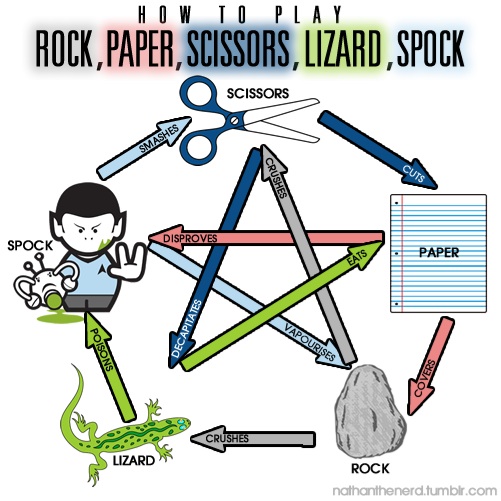
And then transmedia is like, hell no! We can do better than that! And so they play rock-paper-scissors-lizard-spock-spiderman-batman-wizard-glock. Sounds awesome, but what a mouthful. I can barely say that once without messing up, let alone five times fast.
And then when transmedia gets bored with that version, it makes something else.
Holy crap you guys. I could never play that. I don't even want to try.
But the fact that this kind of complexity is even possible just reinforces the idea that storytelling doesn't have to be the same three things over and over again. People have experimented with transmedia or other types of immersive and alternative storytelling, but ever since the 1990's this stuff has practically been on steriods and it isn't even that huge yet. Way back when you could (more) easily quantify all of the possible outcomes of a narrative trajectory. There were only a certain amount of plausible end results that could happen (unless it's just a really crappy narrative). But now it seems there are infinite amounts. Well not infinite, but way more than before. Three hand movements just became 101. It's crazy.
Well I hope this all made sense. Please let me know if it didn't. And let me know if you think this method could work when looking at transmedia stories. Just bombard me with all your thoughts! I want to know!
-Danny
P.S. I had a handful of other thoughts and examples on this but I forgot some of them. I'll check back in my notes and if I see anything I missed then I'll add it. Because I definitely had more specific examples. I just know I did.
P.P.S. And yes,
I will re-read and then edit this again for the probably numerous
spelling and grammar mistakes, but for now I just needed to post it.

Posted in
audience,
barriers,
cohesive,
kernels,
LBD,
satellites,
streams,
theory,
thesis,
transmedia,
TV,
water,
weather,
webseries
|
Written on Friday, April 18, 2014 by Unknown
Holy guacamole.
I just made something epic.
An overly detailed, uber comprehensive Lizzie Bennet Diaries timeline. Tweets and relevant tumblr posts included!
And it took forever. I'm getting tired again just looking at it.
Click to enlarge. You'll need to.
For any of the fans out there please let me know if there are any mistakes. I will fix them. And I will try to make the sizing and such better. But not right now. Later. Definitely later.
Some of my decisions on this have reasons, and some of it is off because the official website actually has a lot of little mistakes (that would only really matter to someone like me who would bother to make something like this). But still. It's totally awesome isn't it?
Haha I just had to do that.
-Danny
P.S. Anyone know how to upload a really large version of my timeline pic? I have a super zoomed in one but blogger is not cooperating. Nor is facebook, tinypic, g+...
Help please.

Posted in
epic,
LBD,
The Lizzie Bennet Diaries,
timeline,
transmedia,
tumblr,
twitter,
videos,
YouTube
|
Written on Friday, April 18, 2014 by Unknown
Man, that last one was loooooong. But don't worry. I intend to make this one much shorter and less ranty. Frankly, I just don't think I could write another one like that.
Well I've talked to death about web shows, so now it's time to talk about transmedia.
This semester I did quite a bit of research and found four books that I have primarily relied on for my work. I also found quite a few articles, but will only discuss the ones directly relevant that will not encourage me to go on a tangent.
The four books are cited in my bibliography but I will list them here again:
1. The Art of Immersion by Frank Rose
2. Convergence Culture by Henry Jenkins
3. Spreadable Media by Henry Jenkins, Sam Ford, and Joshua Green
4. A Creator's Guide to Transmedia Storytelling by Andrea Phillips
I also have some other oddities such as two thesis projects and a syllabus.
But first, the books.
To be honest, the two books that I used the most this semester were the ones by Rose and Phillips. I used Jenkins work a lot, but more from his blog than his books.
All four of these works are quite different, but they do have plenty of overlapping themes. And they all are mostly composed of history. How did we get to this point? Why? What does it mean? And in Phillips' case, how do we use what we've learned to make more - and better - creations?
Convergence Culture and The Art of Immersion are perhaps the most similar. Each go through the major points in media history, citing big examples and getting into all of the nitty gritty details that college students like me really need to know. So they definitely overlap plenty of times in terms of facts, but Jenkins and Rose do have their own unique ideas to bring to the table.
Just like the title says, Rose is all about immersion and how media is shifting from a passive, viewer-only standard to an active, participatory experience. He discusses games (ARG, video games, you name it), projects, films, franchises, and so on. If you want to know all about transmedia, this is a great book to start with. And not only does Rose tell you about all of the successes, he also goes into quite a few of the failures and why it is that they may have failed. Jenkins book is really quite similar though it is more often the one quoted in projects and papers like this. I enjoyed them both but read Rose more thoroughly. Probably because Rose's book reads more like a novel, whereas Jenkins is scattered with side-notes, delves into theory more, and also tends to ask more questions such as, "Where do we go from here?" But like many other authors he concludes that it is too soon to tell. At first that sounded like a cop-out, but after further reflection I totally get it. Besides, it a great way to leave room for a second book.
Spreadable Media is Jenkins follow up, but this time it was a collaborative effort. Unlike the last two books which mostly mapped out a lot of the ground work, this is a big ol' book of theory. Now I didn't go into the last two books a lot because it is boring for me to rehash a history book, just like it would be boring for you to read my rehash. I mean, if you want to learn more about topics like how people buy into American Idol, then read Convergence Culture yourself. I'm not going to try to summarize it for you. But with Spreadable Media, I'm just not sure if I even could. This book is more complicated, and I didn't really utilize it that much in my research. I can tell you their catch phrase though, which is written all over the book: "If it doesn't spread, it's dead." Essentially this book goes into theories about spreadability, profit, advertising, politics, enterprising, etc. Maybe if I were starting a transmedia business, I would have spent more time reading it. But then again, that's what the next book if for.
Lastly we have Andrea Phillips and her how-to guide on transmedia storytelling. I actually already did some ranting about this one (surprise, surprise). Like the others she goes over basic history, and I did like most of her definitions (though I had problems with some of them). And unlike the others she shares her personal experiences in the world of transmedia and gives her advice via the following sections: storytelling, structure, production, and the big picture (i.e. funding, profit, etc.). As her subtitle states, Phillips is interesting in telling you "how to captivate and engage audiences across multiple platforms." Transmedia in a nutshell.
Well those are the books. Sorry for the semi-useless summaries, but it would take hours for me to peel through each page and pull out obscure (and probably also useless) quotes and the like. But if you want to learn more about the topic, I would recommend these books. They provide a great baseline.
So I said I had some other stuff too. One of them is a syallbus by - guess who? That's right, Henry Jenkins! He teaches at USC and made a whole course about "Transmedia Entertainment and Storytelling." My dream class. They have some pretty awesome assignments and projects. Unfortunately the syllabus is rather limiting right now because they often have guest speakers from within the industry that simply are not available outside of areas like Southern California or New York. Still, it is a topic that my school hopes to integrate in smaller ways through the rhetoric department. As Jenkins says, "The key point here is that transmedia needs to be understood as an ongoing conversation between academic theorists and industry practitioners, that many of the key conceptual leaps have been made by vernacular theorists working in the media fields and trying to explain their own practices, and students need to be exposed to the more pragmatic aspects of how transmedia works" (946). Maybe in the future this will be a reality as opposed to a possibility.
Because of projects like The Lizzie Benet Diaries, students have become more interested in transmedia and there are some theses reflect this. I have found two that I really like and they are:
I'd just like to point out that these are both masters theses from outside of the United States. I'm curious as to whether or not transmedia is more popular in other countries, if theses are more likely to be put online by non U.S. schools (who possibly fear plagarism more? I don't know), or if I just haven't been looking hard enough. Regardless, these are exemplary pieces of work. The first thesis goes into the intricacies of the production process in relation to transmedia. The author even made a really cool "Transmedia Manifesto." It is at the very end of the pdf and I highly suggest taking a look. The second thesis identifies the "Story Bridge Model" which I believe is a creation by the authors. The three bridges are the story universe, timeline and events, and the characters (69). They discuss the connectivity of transmedia and even conduct an experiment. It's just fascinating.
Well that is basically it in terms of what resources I used. I mean I did a lot of other online research as well that helped me learn more about my topic. That was more for the sake of broadening my horizons and was not intended to be used specifically in this project. If you would like to see some of the links I found to be helpful then here is a quick list that I've been keeping for a while (Note: These are only about webseries):
Articles by the creators of VGHS:
Articles by Bernie Su from when he was working on Compulsions:
Other:
Oh wait, I do have some transmedia articles. Here we go:
Litvestigation is finally complete. And now I get to use this gif which I have been holding off on using until it applies most accurately.
Bam!
-Danny

Posted in
Andrea Phillips,
articles,
books,
Frank Rose,
Henry Jenkins,
history,
immersion,
literature,
litvestigation,
project,
thesis,
transmedia,
webseries
|
